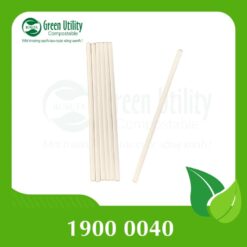Compostable Straws: What You Need to Know
Compostable straws have emerged as a sustainable solution to the growing problem of plastic pollution. These straws are made from natural materials, such as plant-based polymers or agricultural waste, and can be broken down into organic matter through composting, reducing their environmental impact.
Compostable Straws: A Sustainable Alternative to Plastic Cups
Traditional plastic straws, often used for a few minutes, can persist in the environment for hundreds of years, posing a significant threat to marine life and ecosystems. Compostable straws, on the other hand, offer a viable alternative that addresses the issue of plastic waste.
Types of Compostable Straws
- Polylactic acid (PLA) straws: Derived from renewable resources like corn starch, PLA straws are sturdy and commercially compostable.
- Paper straws: Made from uncoated paper, paper straws are biodegradable and compostable, but they may soften or become soggy in hot or cold liquids.
- Straws from agricultural waste: Straws made from agricultural byproducts like wheat straw or sugarcane bagasse are biodegradable and compostable, offering a sustainable use for waste materials.
- Plant-based straws: Plant-based straws are made from materials that are derived from plants, such as cornstarch, sugarcane, or bamboo.
Why are Compostable Straws better for the environment?
- Reduced plastic waste: Compostable straws break down into organic matter, reducing the accumulation of plastic waste in landfills and oceans.
- Sustainable resource utilization: Many compostable straws are made from renewable plant-based materials, promoting sustainable resource management.
- Minimal environmental impact: Unlike plastic straws that can harm marine life and ecosystems, compostable straws pose minimal environmental risks.
How to compost Compostable Straws
Compostable straws can be composted in either home or commercial composting facilities. For home composting, follow these steps:
- Cut the straws into smaller pieces: This accelerates the composting process.
- Add the straws to a compost pile or bin: Ensure the compost pile has a balanced mix of green and brown materials.
- Maintain proper compost conditions: Provide adequate moisture, aeration, and temperature to facilitate composting.
- Monitor the composting process: Compostable straws should break down within a few months to a year.
Conclusion
Compostable straws represent a significant step towards a more sustainable future. By replacing plastic straws with compostable alternatives, we can reduce plastic pollution, conserve natural resources, and protect the environment. As awareness and demand for eco-friendly products grow, compostable straws are poised to become the standard in the beverage industry.
Compostable White Paper Straws










